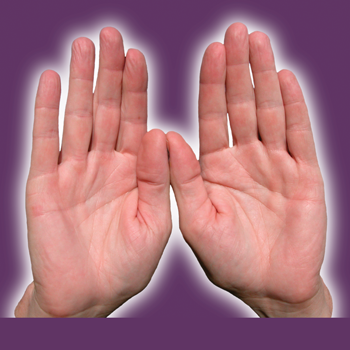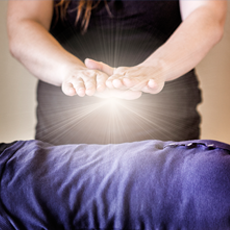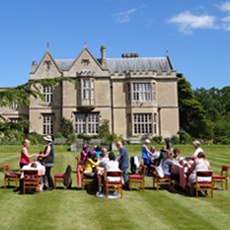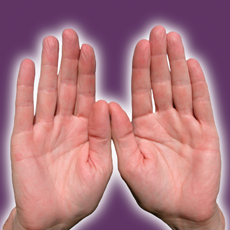by William Lee Rand
I had taught Reiki in a prison in India a few years ago and had gotten so much out of it that I wanted to do more of this work. I was interested in teaching in a US prison and sent my intention out to the universe on a carrier wave of Reiki energy. After maintaining my intention steadily for several months, I began to receive letters from a man at the Southeast Correctional Center in Charleston, Missouri. He asked if we could send Reiki books, magazines and CDs to his prison library and he included instructions on how to do this. I was happy to honor his request. After getting the materials, he asked if anyone could come to teach Reiki and said there were a number of prisoners interested in attending a class.
I was glad my Reiki prayers had been answered and began the process of getting permission and setting a date. I contacted the prison chaplain and he explained how the process worked and sent all the papers I’d need to fill out.
I learned this was a maximum security prison which meant the prisoners were serving very long sentences or were in for life. This also meant they had committed some of the worst crimes. I was concerned about the men, how I’d deal with their energy and what the prison environment would be like. It felt as though I was going to be involved in a very serious experience, interacting with people for whom freedom, one of the most precious of human needs was being denied.
And at the same time, the difficulty of their situation made me feel enthusiastic about how helpful Reiki would be for them; how it could raise their spirits, heal their pain and inspire them to think of creative ways to make their time in prison more worthwhile. And for those who would eventually get out, hopefully it would help them integrate back into society more easily and provide a way for them to help others by providing Reiki sessions.
I was going to teach Reiki I&II and a date was set, but after waiting over six months, the date was canceled and I was given another date several months later. Finally the time came and I traveled to Charleston and checked into the only motel in the area. Curious about what the prison was like, I drove over to the parking lot in front of the prison entrance and looked around. There were no walls, but the prison was surrounded by high chain link fences completely covered with Concertina wire. There was a system of three fences with the middle one being electric.
On the day of class I arrived early, went through security and was given a beeper to wear. If while teaching I felt threatened, I could summon help by pushing a button.
The first day I was escorted across the yard by a volunteer. On sequent days, I was allowed to walk across the yard and to the class room entrance by myself. I was surprised that they allowed me to do this and I was even more surprised to see that some of the guards were female. But as I spoke with the guards and then eventually met the prisoners I learned that the part of the prison I was in was relatively safe. Everything was clean and I saw no bars nor barred doorways, but regular steel doors with larger than normal locks. And it did feel less negative than what I had imagined.
The prison was newly built and was divided into “houses” where the prisoners live. The lower numbered 1 and 2 “houses” were for people who had not adjusted to prison life well and were a threat to other prisoners and to themselves. The higher numbered 4 and 5 “houses” were for those prisoners who had established a record of following the rules and who got along well with everyone. In these higher numbered “houses” the prisoners were rewarded with more freedom and amenities such as microwave ovens and television in their cells. The students I taught were from houses 4 and 5.
Prison rules required that the prisoners return to their cells for a head count three times a day. Because of this, I had to teach the class in three periods of 3 hours each with one hour between each period. When I taught I was in the classroom with the prisoners without a guard being present. This felt a little ominous at first, but as I continued I became more accustom to the situation.
The men were subdued when the class first started so I started the class with introductions as a way to get the class energy moving and so I could get to know each student. They mostly shared about their interests and previous studies with healing and spiritual work. One thing many mentioned is that they were already part of other spiritual groups in the prison including Buddhist, Wicca, and Pagan groups, so the concept of Reiki was familiar to them.
After the attunement and especially after we did a self treatment, they began to be noticeably affected by the Reiki energy; they lighten up as they realized the value it had for them in their prison environment. Many of them began to open up emotionally and seemed happy about being in the class.
One man who was in prison with his brother who was also in the class expressed that he had been in prison such a long time that he had been able to work through his bitterness about being there. He said that he accepted that he was in prison and that he had done what he was accused of and deserved to be there. Another man who looked to be in his early 30’s said he had entered prison when he was 19 and had been sentenced to life plus 45 years with no chance of parole; he said this in an almost casual way without any sign of remorse.
In talking with them, one issue they mentioned having to deal with constantly was the negative energy of the prison environment and especially the negative energy coming from other prisoners. The way they had been dealing with it was to put forth effort to ward off the negative energy, often with negative energy of their own and also by withdrawing and shutting down. I showed them a more evolved way of dealing with negative energy by using the power symbol and surrounding themselves with the positive energy of Reiki. They experienced how this positive energy blocked negative energy and allowed them to remain open to positive energies and feelings. As they used the technique I could see dark layers of negative energy dissolving in their energy fields and being replaced by Reiki energy. Their feelings also became lighter and they began to smile and show amazement and appreciation.
They also liked the ability to send distant Reiki. Some mentioned how much they valued this ability as they’d be able to send Reiki to family members and this would help them feel closer to them. They also looked forward to sending Reiki into their cells to maintain a positive space and to send it to the whole prison to help improve conditions.
Another issue they expressed concern about was the possibility of getting sick because of close contact with so many other prisoners. They liked the idea that they would be able to give themselves Reiki treatments everyday and use it to build up their positive energy fields and improve and maintain their health. Another prisoner who had injured his leg and was frequently in pain was impressed that he could use Reiki to reduce the pain and heal his leg. The men seemed pleased with the class and toward the end, a feeling of group well-being and inter connectedness had developed.
I found teaching Reiki in prison to be a deeply moving experience. I came to know at least to a certain extent what it’s like for people to be in prison. And I feel fortunate that I was able to do something worthwhile by introducing Reiki to them. I hope this article will inspire others to teach Reiki in prison.







